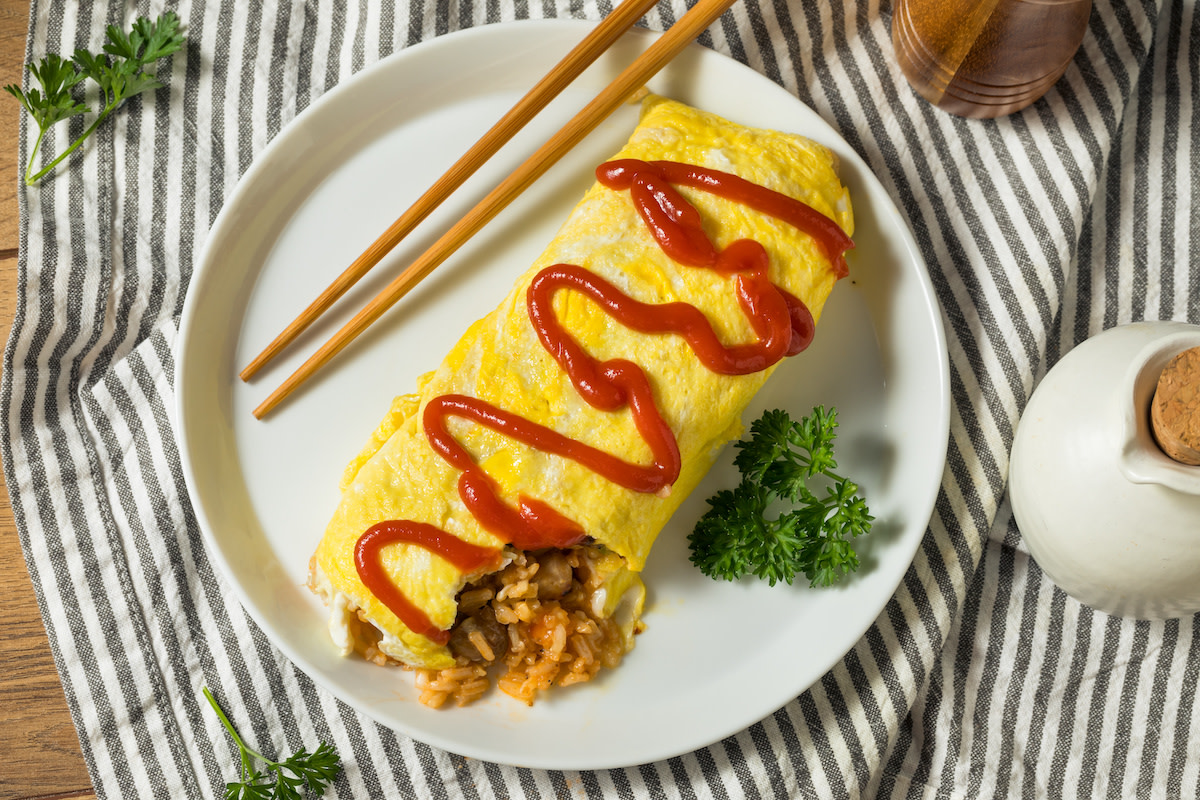Omurice Recipe: How to Make Japanese Omelet Rice
Written by MasterClass
Last updated: Sep 19, 2022 • 3 min read
This popular egg-topped Japanese fried rice dish is available in diners and breakfast spots across Tokyo and beyond. Ditch the plain scrambled eggs in favor of this flavorful Asian dish, which you can make with leftover rice and pantry staples.
Learn From the Best
What Is Omurice?
Omurice (オムライス), also known as omuraisu and Japanese omelet rice, consists of tomato-flavored fried rice wrapped in a thin, soft-cooked omelet. One of the key ingredients of this Western-inspired dish is ketchup, which flavors the rice and garnishes the top of the omelet. (Sometimes, chefs place the omelet atop the rice.)
Omurice is an example of “yōshoku,” a Western-influenced style of cooking that became popular in Japanese cuisine during the Meiji era of the mid-nineteenth century when Japan looked to the West as a model for modernity.
“Omurice” is a portmanteau of the words “omu,” meaning “omelet,” and “raisu,” meaning “rice.”
4 Tips for Making Omurice
Once you’ve mastered the basics of this versatile dish, you can craft countless variations with the fillings of your choice. Follow these tips to make the most of your Japanese omurice:
- 1. Cook the egg just until it sets. One of the key elements of omurice is a soft, supple, slightly undercooked omelet, which adds creaminess and moisture to this dish. Cook the egg until the bottom of the omelet is just set before removing it from the heat source.
- 2. Experiment with additions. You can add many ingredients to the fried rice base of this recipe, from any type of day-old brown or white rice to leftover veggies to cooked proteins like chicken breast, boneless chicken thighs, steak, ham, or sausage. Garnish the omelet with kimchi, thinly sliced green onions, and other tasty toppings for an added layer of flavor.
- 3. Change up the condiments. Ketchup is the most traditional condiment choice for omurice, but feel free to garnish with alternative condiments, like Japanese mayo, Sriracha, tonkatsu sauce demi-glace, and more.
- 4. Store properly. It’s best to eat omurice right after you make it, but you can store any leftovers in an airtight container in the refrigerator for up to three days.
Simple Omurice Recipe
makes
prep time
10 mintotal time
18 mincook time
8 minIngredients
For the rice:
For the omelet:
- 1
Prepare the fried rice. In a medium non-stick frying pan over medium-high heat, heat the vegetable oil.
- 2
Add the diced onion to the pan and sauté until slightly translucent, about 2–3 minutes.
- 3
Add the frozen peas and carrots to the pan and cook until warmed through, about 2 minutes.
- 4
Add the cooked rice, ketchup, and soy sauce to the pan and stir to combine.
- 5
Season the fried rice with salt and pepper, and transfer the rice to a bowl. Wipe down the pan.
- 6
In the same pan over medium heat, heat the vegetable oil for the omelet.
- 7
While the oil is heating, whisk together the eggs, milk, and salt in a small bowl until they are well combined.
- 8
Pour the egg mixture into the hot pan, tilting the pan to spread the egg out in a single layer.
- 9
Cook the egg until the bottom has just set and the top is still soft and slightly runny, about 2 minutes.
- 10
Turn the heat to low and sprinkle the cheddar cheese over the omelet. Add a ⅓ of the ketchup-rice mixture to the center of the omelet. Carefully fold each side of the egg towards the center over the rice to seal the omelet into a football shape.
- 11
Remove the pan from the heat.
- 12
Place the remaining ⅔ of the ketchup rice in the center of a plate and arrange it into a circular mound.
- 13
Carefully flip the omelet over on top of the rice, seam-side down.
- 14
Drizzle the top of the omelet with additional ketchup and serve.
Become a better chef with the MasterClass Annual Membership. Gain access to exclusive video lessons taught by the world’s best, including Niki Nakayama, Gabriela Cámara, Chef Thomas Keller, Yotam Ottolenghi, Dominique Ansel, Gordon Ramsay, Alice Waters, and more.
